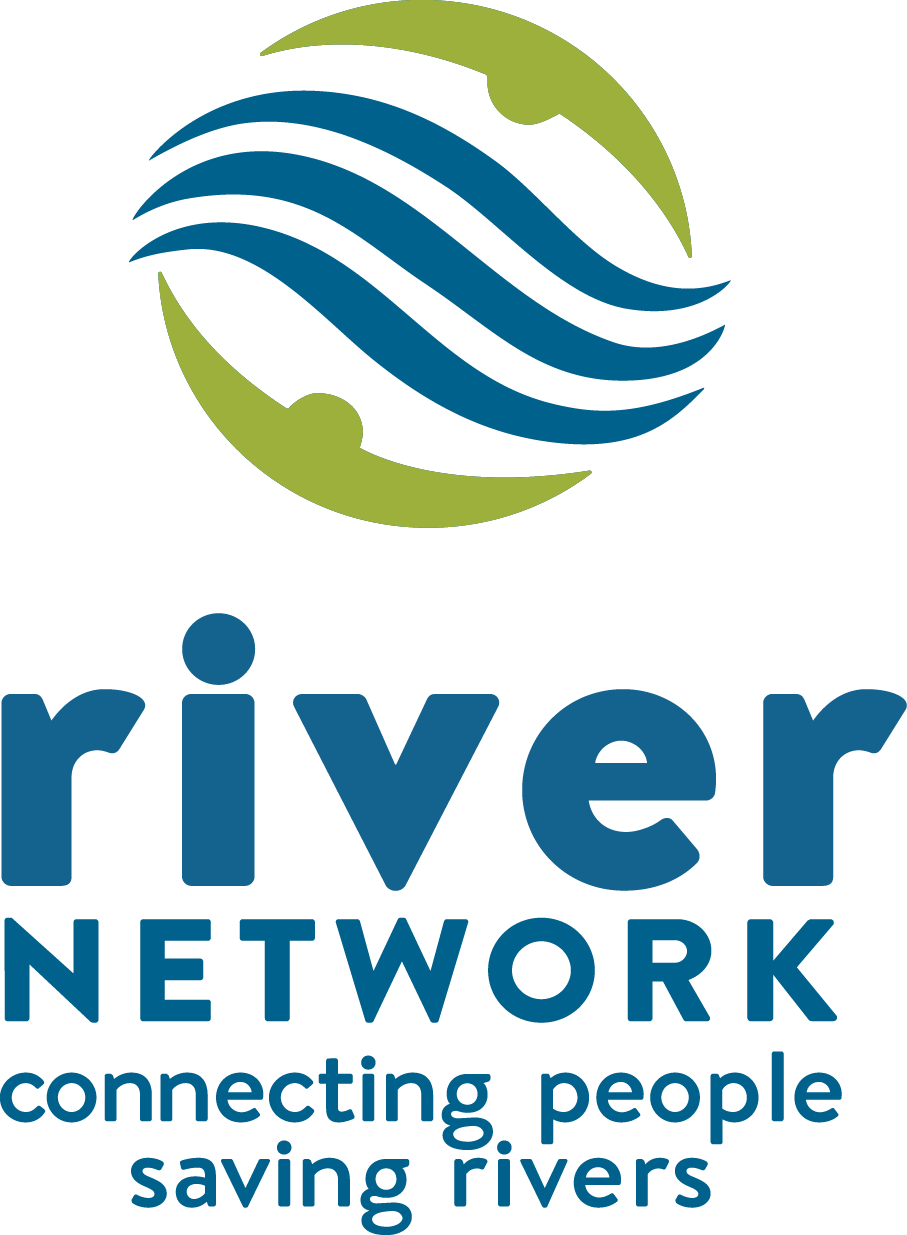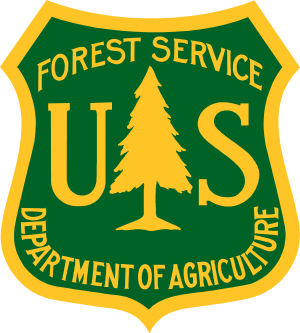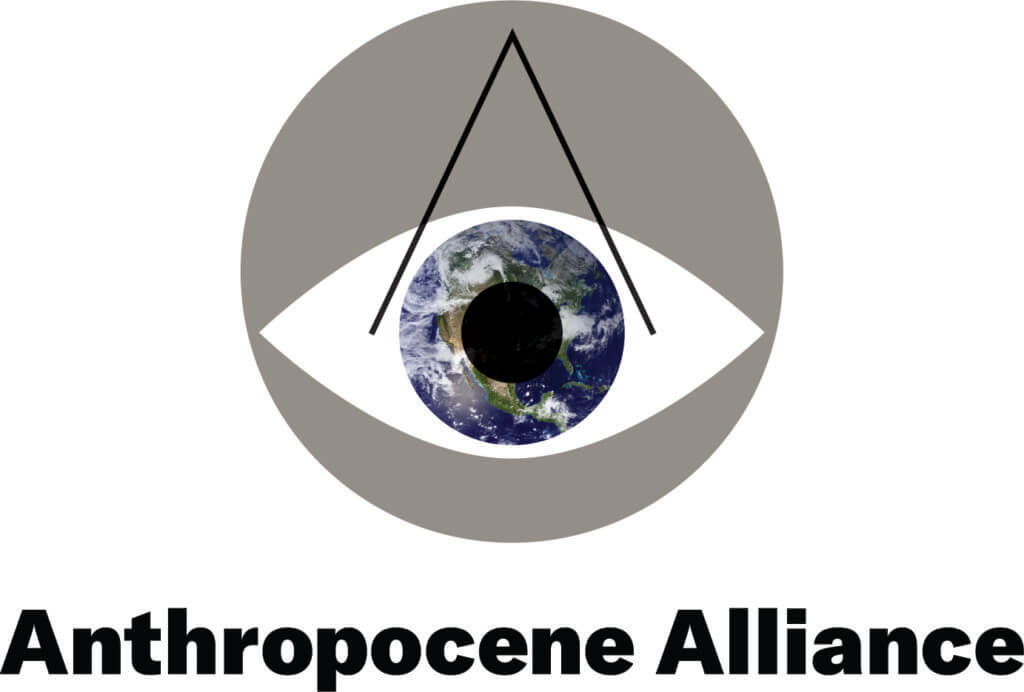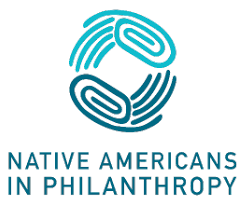Rooting Resilience Request for Applications: Tribes & Tribal Organizations
Overview
River Network is excited to announce a funding opportunity for Federally Recognized Tribes and Tribal organizations for planning and implementing small community forestry projects in disadvantaged communities. Free technical assistance is available during both the application process and the grant period, through River Network and our Rooting Resilience partners at Anthropocene Alliance and Native Americans in Philanthropy, to support organizations who are new to federal funding and may need additional help applying for or managing this grant. River Network is an equal opportunity provider.
This opportunity is possible thanks to a grant from the Urban & Community Forestry Program of the Forest Service, an agency of the U.S. Department of Agriculture, under the Inflation Reduction Act (Funding Opportunity #: USDA-FS-2023-UCF-IRA-01). River Network will serve as a national pass-through partner of the Forest Service, providing funding and technical assistance for Federally Recognized Tribes and Tribal organizations, as defined below, to plan and carry out forestry projects that build the community’s abilities and resilience to climate-related stressors like flooding and heat waves.
Grants will range from $75,000 to $200,000 over a 1-3 year period, dependent upon the project, its activities, and grantee capacity.
Applications must be submitted by 11:59pm ET, October 23, 2024. We invite you to reach out to us before this deadline (rootingresilience@rivernetwork.org) to discuss your project and see if it may be a good fit, and to access our free technical assistance (resources listed below) to help you apply.
A minimum of $1.4 million in program funding is available specifically for Tribal entities. Match or cost share is NOT a requirement for requesting grant funds.
Program Priorities and Funding Levels
The Rooting Resilience Program will fund small-scale forestry projects that support equitable climate resilience in disadvantaged communities that are often the most impacted by climate change. River Network will prioritize community-led projects that improve the condition of the tree canopy to address the challenges of flooding and erosion, extreme heat, community health concerns (such as asthma or heart disease), and/or increase access to green jobs through forestry. Program funding is meant to provide support for organizations and communities that are on the frontlines of climate change impacts and may not have received federal funding before.
Grant funding is available at two levels:
🌱 Seedling Projects
Awards of $75,000
Support for the planning and implementation of smaller-scale urban and community forestry projects for 1-3 years.
Projects at this scale will likely be most effective proposing work at a single site or several small sites. Projects should also include activities that build people’s skills and abilities to lay the foundation for future forestry work.
🌳 Sapling Projects
Awards of $75,000-$200,000
Support for the planning and implementation of slightly larger scale projects for 1-3 years. Grant requests at this level can support planning activities such as completing engineering or designs, securing necessary permits, conducting community engagement, or developing a workforce development curriculum. Projects could also focus on the implementation of tree planting activities, tree maintenance, or the deployment of a workforce development program.
Eligible projects, at both funding levels, include but are not limited to the following examples:
Urban and Community Forestry Planning and Implementation
- Planning and carrying out tree plantings as stand-alone projects or as part of larger green infrastructure projects;
- Integration of tree planting and/or tree care and/or incorporating Traditional Knowledge into watershed, climate resilience or other planning efforts;
- Community or volunteer-based tree inventories or programs to monitor tree/forest health;
- Incorporating tree plantings and subsistence species into existing greenways, parks and water trails, projects that support community health and/or protect access to traditional foods and water;
- Initiating partnerships with public health professionals and organizations to assess and mitigate extreme heat or air quality concerns in a neighborhood through trees;
- Tree care and maintenance including the removal of invasive species or hazardous tree removal, tree watering or the installation of tree protection;
- The promotion of native trees for residential or school based “stormwater-smart” programs or the planting of “edible forests” that provide people with cultural connections and access to food.
- Facilitating dialogue between renters and property owners to increase renter involvement in tree planting and tree care activities.
- Mangrove forest restoration or other forestry approaches that address coastal and river bank erosion through tree planting.
Urban and Community Forestry Education and Outreach
- Projects that build community support for trees, forests and green spaces through public programming, education campaigns, and volunteer opportunities;
- Support for the creation of grassroots, volunteer-led tree distribution and care program;
- Projects that provide educational activities for youth on the many benefits of trees and foster the next generation of tree stewards;
- Projects that increase languages that educational materials are provided in and American with Disabilities Act (ADA) accessibility of educational materials related to trees and urban forestry.
- Projects that build trust with disadvantaged communities by engaging residents in all steps of a tree-planting project, from selecting priority areas of where to plant trees to ways of measuring success.
Urban and Community Forestry Workforce Development
- Projects that establish or expand existing workforce development, job training and Tribal youth training programs to include tree planting and maintenance activities.
- Support for expanded recruitment and access to workforce development programs by increasing language options and ADA accessibility for programs providing career pathways to urban and community forestry related jobs.
Projects must start no later than January 1, 2025, and must be completed by January 1, 2028.
Who Should Apply
Federally recognized Tribes, Alaska Native Corporations / villages, Tribal organizations as defined in 25USC 5304 (I) and operating within the United States or its territories, and organizations working in Tribal communities.
- Eligible applicants may apply for funding for a project to take place on non-Federal lands including:
- State and local governments
- Private lands
- Homeowner associations
- Tribal/Alaska native corporation (includes Trust lands)
Lands owned or administered by the Federal government are not eligible for this funding opportunity except for lands held in trust for Native American Tribes and individuals.
Application & Review Process
This is an open funding call, and we welcome applications from all organizations, groups, and entities whose work is eligible and in alignment with this program’s priorities.
Part of our program’s goal is meeting organizations and communities where they are, especially those seeking federal pass-through funding for the first time. We will help applicants build the necessary skills and abilities to do this work, as well as provide technical assistance as needed. To this end, we encourage you to contact us at rootingresilience@rivernetwork.org with questions. Our staff and partners are here to support you with what you need, whether that is help with the application itself or questions about award requirements and expectations.
Application Options
It is River Network’s goal to have this application process to be as easy and accessible as possible – especially to potential first-time recipients of federal pass-through funding. There will be no penalties for lack of traditional writing conventions, such as grammar, punctuation, and formatting in the application process. To make the process as flexible as possible, we are offering two ways to submit your application materials:
- Full written application, including narrative questions, uploaded to our online grant portal. Preview the application in PDF form.
- A recorded video or phone call with a Rooting Resilience program staff member to address narrative questions for the program, in addition to an applicant submitting basic organization and project budget information in our grant portal. The video or call will be no longer than 30 minutes and recorded to be provided to reviewers for evaluation.
No mode of submission will be given preference over another. The review of both written, phone, and video applications will be conducted using processes and a scoring rubric that aim for fair and objective assessment of projects, while maintaining a competitive process.
Application Review Process
Applications will be evaluated by a minimum of three program reviewers based on the following five criteria.
Reviewers will consider how proposed projects align with these five criteria when determining the score for each category and provide written comments as justification. Each of the criteria will be evaluated on a scale of 1 to 5, where 1 is insufficient, 2 is significantly deficient, 3 is satisfactory, 4 is excellent and 5 is outstanding. There will also be an overall application score from 1-5.
| Evaluation Criteria | Score | |
|---|---|---|
| Partnership and Community Impact | Applicant either directly represents a Tribal community or proposes to directly benefit one through collaboration. The application also should address how project activities will directly benefit that community. | 1-5 |
| Community Forestry and Climate Resilience Benefits | Proposed project will promote, plan, or carry out activities that increase or improve the community’s trees. The project should also support climate resilience including addressing the challenges of flooding, extreme heat, equitable distribution of tree canopy across a city or community, etc. | 1-5 |
| Budget | Project budget includes costs that are reasonable, allowable, and necessary for the work proposed. Budget narrative includes sufficient detail for demonstrating the proposed project can be achieved with requested funding. | 1-5 |
| Project Feasibility | Project team has the necessary experience and/or skills to achieve project outcomes (this is not only professional experience for a similar project- this can include having established community relationships, Traditional Knowledge or other relevant skills). Project timeline seems reasonable for the proposed scope of work. | 1-5 |
| Capacity Building Potential | The project would potentially set the stage for future urban and community forestry work by building organizational or community capacity. Applicant entity has limited or no previous experience with federal funding. | 1-5 |
| Overall Score | A comprehensive score for the strength of a proposal in its entirety with the above criteria and the project’s alignment with program priorities. | 1-5 |
The Review Committee will score each project separately based on the above evaluation criteria, and also consider the full range of applications submitted to ensure that funds are awarded fairly both geographically and by project type.
Application Instructions
Step 1: Provide Basic Applicant and Project Information in Grant Application Portal
All applicants must use our grant portal to submit basic information about your organization, project location, and project budget. Then you can choose whether to submit your narrative in written form or as a video or phone call. You’ll also be able to provide optional supplemental information like letters of support or a project map.
Step 2: Select Application Submission Method
💻 Online Application
After logging into the grant application portal fill out the application questions, budget form, and budget narrative information. The application is available to preview as a PDF.
📞 Phone Call or 📹 Provide Recorded Video
If you choose to submit the narrative portion of your application via phone or video, please first complete the basic applicant information, budget and budget narrative, and project location information in the online grant portal. For proposals submitted via phone: use the link above to schedule the phone conversation with a Rooting Resilience staff member. For proposals submitted via video: record your own video and upload the video file using the grant application portal. Note: If internet speed or bandwidth are a concern please consider a phone call rather than video submission.
Your recorded video submission or phone call will be no more than 30 minutes in length. Your conversation will be recorded, and assuming you provided your basic applicant information and budget, your submission will be complete. Click here to schedule your phone call.
In the recorded video or phone call you’ll address the following questions (these are the same narrative questions as the written applications):
- What need will this project address and what are the intended outcomes (what will be the result of the project)?
- Community Forestry and Climate Resilience Benefits: Please describe the project activities and explain how it will build community resilience through urban and community forestry?
- Project Feasibility: Who are the key individuals on the project team and what skills are they bringing to ensure a successful project? Relevant skills include prior work experience, lived experience, established community relationships, Traditional Indigenous Knowledge or other relevant expertise.
- Community Relationships and Engagement: Please describe the relationship that your project team has to the community you are engaging with. Community in this case includes its people, its land/geographical area and other local community efforts/initiatives you are engaged with in support of your mission.
- Partnership: Do you have partners on this project and, if so, what will be their specific role(s)? Note: We recognize that some applicants under this RFA, as Sovereign entities, may not include other entities as project partners. If so, please explain.
- Capacity Building Needs: What have been the challenges/barriers to obtaining previous funding and how do you think receiving a Rooting Resilience grant could build capacity for your community or organization/entity?
- Project Timeline: Please provide a general and brief timeline for your major project activities, who’s responsible for those activities, and the anticipated result of those activities. A brief overview is all that is necessary at the application stage as we recognize exact dates might not yet be planned.
- What is the status of any permits, authorizations, or permissions (City, County, landowner, etc.) needed before you can begin your proposed work?
Applicant Technical Assistance
- Tribal Entity Application preview – download the PDF version of the application (note: application must be submitted in grant portal)
- Applicant Webinar – watch our recorded session from 9/17/24.
- Crafting a Compelling Proposal for the Rooting Resilience Program – watch our recorded session from 9/25/24 when our partners at Anthropocene Alliance shared the most effective ways to convey your project ideas and reviewed grant writing best practices.
- Virtual Office Hours – register here for dedicated one-on-one time for discussing project concepts and addressing any questions you have about the Rooting Resilience program and application process.
- Frequently Asked Questions
- Budget Template (clicking the link will download an Excel spreadsheet to your device) – use this Budget Template as a tool to plan your project expenses. All budget information ultimately needs to be submitted into the online grant portal but this template can be used for budget planning and calculations.
- Budget Example – this example includes the available budget categories for the Rooting Resilience program and demonstrates the level of detail required in a budget narrative to explain the rationale, purpose and calculation of anticipated costs by line item.
- Letter of Support Template (clicking the link will download a Word document to your device)
- Grant Portal Applicant Guide and Grant Portal Frequently Asked Questions
Please find Additional Resources, at the bottom of this page.
To ensure applicants have equal access to all information, we will add the responses to common questions received via email to the Frequently Asked Questions page. If you need any additional information or have questions regarding this funding opportunity, you can contact us for guidance and assistance at rootingresilience@rivernetwork.org.
Program Timeline
Rooting Resilience Program Grantmaking Timeline
| Rooting Resilience Grant Milestone | Timeline (subject to minor changes) |
|---|---|
| Applicant webinar recording | 3:30pm ET on September 17, 2024 |
| Application submission deadline | 11:59pm ET on October 23, 2024 |
| Review Period | Late October through mid-November 2024 |
| Awards announced to selected grantees and applicants not selected are notified | Mid-November 2024 |
| Execution of award agreements | Mid-November through end of December 2024 |
| Project Period Start Date | January 2025 |
| Reimbursement of project costs | Throughout 1-3 year project timeline |
Expectations and Support for Awarded Grantees
If selected for an award and partnership with River Network these are the following expectations and technical assistance you can expect over the course of your funding:
- Bi-annual performance and financial reports to track progress. Organizations that have limited capacity to submit traditional reporting may opt to submit performance reports via a recorded call or video instead.
- Agreement to work with River Network staff to facilitate a site visit during your award period and/or feature your work through storytelling.
- You or a member of your organization will have the opportunity to connect with your fellow grantees during your award period to engage in capacity-building, networking, and technical assistance to ensure the successful completion and sustainability of your work. It’s anticipated there will be opportunities to virtually meet up to four times per year beginning in January 2025. In your proposed project budget you can include the necessary staff time to participate in these convenings, which we anticipate will be 1-3 hour convenings.
- Support from River Network and our program partners during your award period to address any project challenges, ensure compliance, and highlight project successes.
Key Terms
Training and learning that provides support for building organizational infrastructure and works to ensure the longevity of a project or program. Capacity building can include, but is not limited to, trainings, one-on-one assistance, peer-to-peer learning, coaching and mentoring to help build skills, strengthen organizational systems, support collaboration, and enhance program design and delivery.
A group characterized by a particular geographic area and/or by the relationships among members with similar interests and can be characterized as part of a broader national or regional group.
Means a public or nonprofit organization that supports and/or represents a community and/or certain populations within a community through engagement, education, and other related services provided to individual community residents and community stakeholders.
Communities that are overburdened or underserved. This program uses the Climate and Economic Justice Screening Tool (CEJST) or the EPA IRA Disadvantaged Communities tool to identify Disadvantaged Communities.
Note: Any geographic area within Tribal lands is included in this definition, and include Alaska Native Allotments; Alaska Native Villages; American Indian Reservations; American Indian Off-reservation Trust Lands; and Oklahoma Tribal Statistical Areas.
The ability of individuals, a community, or a system to adapt to changing conditions and withstand and recover from disruption, including climate-related stressors like flooding and heat waves.
The part of a community that is shaded by trees. Imagine for a moment that you are a bird flying high above a particular city, looking down. The tree leaves and branches covering the ground is our tree canopy.
Federally recognized Tribes, Alaska Native Corporations / villages, Tribal organizations as defined in 25USC 5304 (I) and operating within the United States or its territories, and organizations working in Tribal communities.
Additional Resources
River Network Resources
- Tools for Equitable Climate Resilience
- The Community Leadership Toolkit aims to build the capacity of organizations to serve as catalysts in supporting members of their communities stepping into leadership roles, engaging them meaningfully in defining the scope of local climate change risks and impacts, and formulating and implementing equitable solutions.
- The Community-Led Research Toolkit provides step-by-step guidance and lessons learned on how to effectively engage with community members to understand climate impacts and to develop more equitable climate resilience strategies.
- Equitable Development Toolkit: Community-Centered Solutions for Green Gentrification and Displacement: This toolkit is meant to inform organizations and communities on the importance of equitable development in greening projects, with further guidance on how to incorporate and implement equitable development strategies to reduce the risk of gentrification and displacement. The target audiences are nonprofit organizations, community-based groups and other entities who want to integrate anti-displacement strategies into their greening efforts and develop partnerships in support of their equitable development goals.
- Unlocking Resources: Leveraging Federal Funding Through Nonprofit Municipality Collaboration: Accessing federal funds is no small feat – but applying through a strong partnership can help to lighten the load. In this panel discussion, hosted and facilitated by the Southeast Sustainability Directors Network and River Network, two advocates share their experiences with forming strong partnerships between community-based organizations (CBOs) and local governments.
Other Urban and Community Forestry Funding Opportunities
American Forests – Tree Equity Catalyst Fund
The Catalyst Initiative is American Forests’ initiative to rapidly advance action on Tree Equity by broadening the field of actors with capacity to address systemic tree inequities. In partnership with the Forest Service, American Forests is excited to launch a funding opportunity through a competitive RFP to support both faith-based organizations and frontline environmental justice organizations in advancing your Tree Equity initiative. The Fund will invest a total of $12.8M in environmental justice communities, via a reimbursement-based grantmaking model through two funding tracks: 1) up to $8M allocated to faith-based organizations, and 2) up to $4.8M allocated to frontline environmental justice organizations.
Green Latinos – Trees in Your Community Grant for Community-Based Organizations
Urban forestry funding available to community-based organizations to work in low-income, disadvantaged communities. Projects would implement urban forestry efforts focused on tree planting and maintenance, community engagement, and/or workforce development in the field of urban forestry. Awards may range from a minimum of $200,000 to a maximum of $1,500,000 (funding requests over $750,000 will be prioritized for proposals with a regional strategy). This is a rolling application process beginning September 5, 2024. All applications must be submitted by October 11, 2024
The Arbor Day Foundation – Community Roots Program
The Community Roots Program, made possible by Inflation Reduction Act (IRA) funding, is available for qualifying federally recognized Tribes, Alaska Native Corporations/villages, Tribal organizations, and organizations working in Tribal communities. Individual sub-awards will range from a minimum of $100,000 to a maximum of $1,000,000 total, over a 3-year period, depending on the scope of work, unique needs, and capabilities of the applicant.
Applications are due September 30, 2024.
Trust for Public Land – Forested Community Schoolyards
Funding is available to Tribal and Indigenous schools and communities to reimagine how school grounds are designed, maintained, and stewarded for student learning, climate resilience, and community use. Project or program visions centering the planning, planting, and stewardship of trees while celebrating Indigenous lifeways are encouraged. Applications are due November 8, 2024 and there is a technical assistance webinar on September 24.
Other Relevant Resources
- Arbor Day Foundation: Implementation Templates – Free educational roadmaps to help grow capabilities in specific areas of community forestry. They are deep dives into relevant topics with roadmaps to apply learnings to goals.
- Trust for Public Land: Great Parks Should Not Uproot Communities: Green Gentrification Risk Factors and Anti-Displacement Options – This new paper reviews the growing literature on green gentrification and recommends promising strategies that public agencies and nonprofit organizations can take to limit displacement. This new research synthesizes the evidence on green gentrification risk factors related to the characteristics of green space projects, and summarizes strategies to limit displacement near new green spaces and evidence of their effectiveness.
- Green Latinos’ Urban & Community Forestry Resources Page – This resource page for a variety of tools, guides, articles, webinars, and other useful information for urban and community forestry projects.


River Network is a proud national pass-through partner of the U.S. Department of Agriculture, Forest Service.
Outreach and Engagement Partners:


River Network and these institutions are equal opportunity providers.




